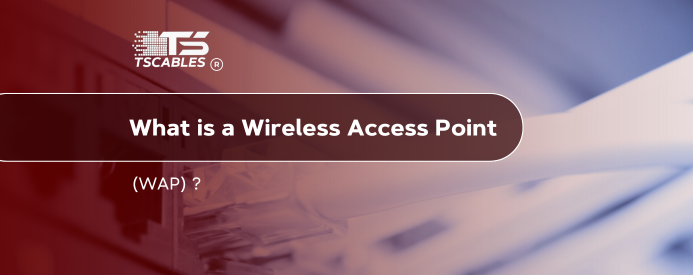Staying connected is more important than ever. Whether it's at home, school, or work, the internet is part of everyday life. But a strong signal doesn't just happen, it starts with the right tools. A wireless access point with an Ethernet port helps devices stay online without wires tying everything down.
It connects wired networks to wireless devices, letting people move freely while staying connected. If you’ve heard people ask, what is WAP internet, it’s usually about this. WAPs are the quiet heroes in your internet setup that are simple, fast, and reliable. Let’s break it all down in a way that actually makes sense.
What Is a Wireless Access Point (WAP)?
A Wireless Access Point, or WAP, gives Wi-Fi to devices that need internet. It connects to a wired router through an Ethernet cable and lets wireless devices, such as phones, laptops, and tablets, connect to the internet. It’s like a doorway between your network and your wireless gadgets.
If you’ve wondered what a WAP network is, it’s just a group of devices that connect through this point. When someone asks what a WAP application is, they might be talking about tools or settings used to manage or control the WAP. In simple terms, a WAP is your gateway to going wireless without losing signal strength or speed.
You may have seen people installing more than one WAP in a large area. That’s because access points wirelessly spread the signal to cover big spaces like offices, schools, or even multi-floor homes. So if you’ve ever thought, where the wireless access point is, it might be above the ceiling or tucked near a router.
There are also devices called a WAP device or Ethernet wireless access point, which turn a wired internet connection into a wireless one. You’ll often see them in homes trying to boost Wi-Fi to hard-to-reach rooms. And if there’s a gap between your main router and the WAP, a wireless bridge to Ethernet can link them up, no need to run long wires through the house.
Some people also confuse WAP with WAP in networking as a general term. It simply means using access points in a network setup to allow Wi-Fi access. The whole WAP networking idea is about building a system where everything can talk to each other wirelessly but still stay stable and fast.
Which Cable to Use?
The cable you use to connect your WAP makes a big difference. Before you go shopping, it helps to know what types are out there. Each one has its perks. Whether you’re setting up in a home or an office, these options give you different speeds and features. Here’s a quick look.
Cat5e cables
A Cat 5e Ethernet cable is the most basic type you’ll find. It can handle speeds up to 1 Gbps. It’s affordable and gets the job done for most home setups.
If you're just using your access point for web browsing, email, or streaming a show or two, this cable is enough. But keep in mind, it’s getting a little old in tech terms. Some folks prefer newer cables for more speed.
Cat6 cables
The Cat6 cables are faster and can support higher bandwidth. A step up from Cat5e, Cat6 cables are better for people who stream in HD, play online games, or have many devices.
If your networking WAP setup needs more speed, this is a solid choice. It reduces interference, making your signal cleaner and faster. It also supports Gigabit Ethernet up to 55 meters in length, which is useful in large homes.
Cat6a cables
Cat6a cables take things further. They’re thicker and can support 10 Gbps speeds up to 100 meters. These are great for larger spaces or professional settings.
If your electrical wiring is doing a lot of heavy lifting, maybe in a warehouse or office, Cat6a is your go-to. They’re also shielded, so there’s less signal noise. They can be overkill for small homes, but perfect for bigger jobs. It is important to know the difference between Cat6 and Cat6a cables to choose the right one.
Final Thoughts
A Wireless Access Point makes internet access easy and flexible. It connects your wired setup to all your wireless devices, so you don’t have to stay tied to one spot. Whether it’s a WAP device in a small apartment or multiple access points wireless in a large building, having the right cable and WAP setup matters. Don’t overlook it.
Trust TS Cables to provide top-quality, affordable networking solutions. Get connected and stay connected to fulfill your needs of reliable cables for your WAP setup.
FAQs
Q1: What’s the difference between a WAP and a router?
A router directs internet traffic. A WAP extends Wi-Fi to wireless devices. Some routers have built-in WAPs.
Q2: Can a WAP work without internet?
Yes, but it won’t give internet access, just device-to-device connections, like a local network.
Q3: Where should I place my WAP?
Put it in a central spot with fewer walls to spread the signal evenly.
Q4: Is one WAP enough for a whole house?
Maybe. Bigger homes might need two or more access point setups for full coverage.
Q5: Do I need special software to set up a WAP?
Not usually. Most WAPs come with a guide and a simple web interface for setup.






